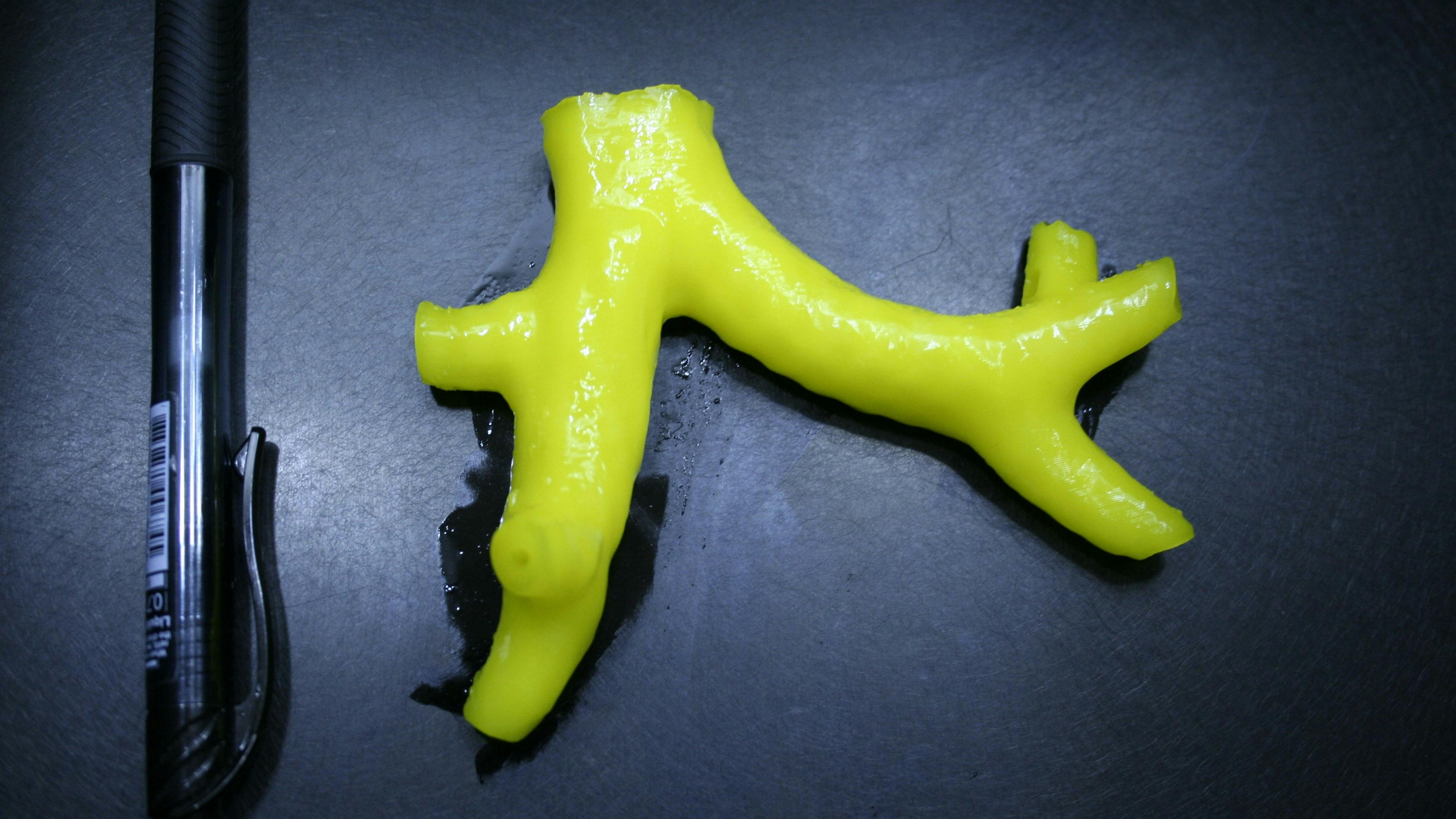AS THE SCIENCE AND TECHNIQUES of 3D printing get more and more sophisticated, medical researchers are increasingly drawn to the challenge of synthesizing human tissue, or even whole organs. “Bioprinting” may of fer a way to create biological structures that would be impossible with any other technology.
Current methods use a laser to cure collagen polymers doped with photosensitive molecules, building solid tissues. Pedro Mendoza, director of bioprinting at collagen printer 3D Systems, told MIT Technology Review that “[w]hen you see the complexity of the lung, what nature does from conception to birth, there is no way to machine that or mold it. 3D printing is the only way we have to create that geometry.” And providing the latticework of tissue is only the first step.
Printing living blood vessels for the vasculature of the synthesized tissue is a feat in and of itself, but adding the necessary cells, proteins, micronutrients, and other critical ingredients to make the tissue “come to life” is probably the greatest challenge.
In 2017, bioprinting pioneer and United Therapeutics CEO Martine Rothblatt told journal Genes & Diseases that fully manufactured organs synthesized from 3D-printed tissues were at least 12 years away, and that current “printed structures” are just a start.
The technical challenges are formidable for a very young field, but the possibility of printing healthy tissue and organs on demand would likely revolutionize modern medicine.










